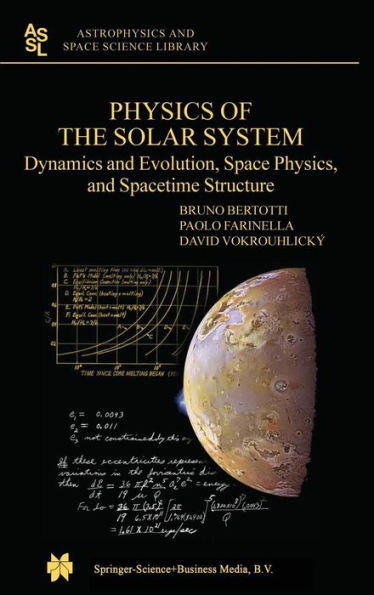"The book is a very good balance between theory and applications, depth of analysis and synthesis, keeping always the focus on the comprehension of the physics ruling our planetary system.
"In summary, this represents both an excellent textbook for advanced students and a fundamental reference, and encyclopedic summary of the current knowledge, for researchers in the Solar System field."
Alessandro Rossi, ISTI-CNR, Pisa, ITALY, in Celestial Mechanics and Dynamical Astronomy
"Physics of the Solar System, the new text by Bertotti, Farinella and Vokrouhlický, succinctly and clearly treats the broad span of topics needed to understand the solar system's structure, formation and operation. The authors show an impressive command of a wide variety of subjects, ranging from celestial mechanics through magnetospheric physics, and on to a description of the workings of spacecraft themselves. The text contains numerous examples, not only from the historical background but also for space-age applications, including many figures from the original research literature. Each chapter ends with a useful survey of relevant texts and papers as well as an interesting collection of problems. The book is a major achievement that should attract a wide readership."
(Joseph A. Burns, I.P. Church Professor of Engineering and Astronomy, Cornell University, Ithaca, NY)
"This book delivers what its title promises. It addresses the fundamental characteristics of the solar system from a physicist's perspective, showing the diverse ways in which physics governs what is observed in, on, and among the planets. It is both encyclopaedic in its coverage and up-to-date in including the most recent advances in understanding and current issues of study."
(Richard Greenberg, Professor of Planetary Sciences, University of Arizona, Tucson)
"This encyclopaedic book is a mine of information on theSolar System that goes well beyond usual dynamical aspects. The authors have succeeded in compromising broadness with depth, and clarity with completeness. This second edition is very up-to-date on all hot topics of modern research. This book is therefore particularly recommendable to students and researchers that seek a multidisciplinary approach to Solar System science. I wish I had it when I was a student myself."
(Alessandro Morbidelli, Observatoire de Côte d'Azur, Nice)
"[...] a well-written and comprehensive overview of the diverse bodies that surround the Sun and of the intricate interplay between them. Physics of the Sun is tightly written, fun to read and should appeal to experts in the field and new graduate students alike. Within its covers abound a wealth of interesting and little-know nuggets of planetary lore that, although available in the scientific literature, have not appeared in an accessible text before. The authors provide a clear and insightful discussion of planetary gravitational fields. I strongly recommend making space on your shelf and time in your schedule for this lively, interesting and authoritative volume."
(Dough Hamilton, University of Maryland (Nature, 427, February 2004)




